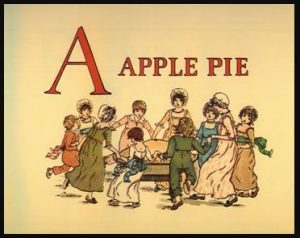 I found an old self-printed book which has some very useful information about teaching reading and I think some of the ideas presented there are worth sharing. The book contains a list of things you shouldn’t do when teaching reading. Many of the items seem wrong at first sight. Some are more subtle. This list represents concepts that are often contained within reading instruction according to the sight method (also called whole word, whole language or look-say).
I found an old self-printed book which has some very useful information about teaching reading and I think some of the ideas presented there are worth sharing. The book contains a list of things you shouldn’t do when teaching reading. Many of the items seem wrong at first sight. Some are more subtle. This list represents concepts that are often contained within reading instruction according to the sight method (also called whole word, whole language or look-say).
The first list explains WHAT NOT TO DO when teaching your child to learn to read. It is taken from the book How the Alphabet Works: a handbook for teaching someone to read based upon the 15th century hornbook by EA Albert. I added the question marks and responses
After reading the list of NOT TO DO’s,
Read the list of YES, DO!’s which I have added below it.
- Train the child to look at each word as a chunk, a whole word at a time? Use flash cards? NO!
- Encourage guessing? Use pictures to interrupt the left-to-right sequence of the text? NO!
- Accept false readings such as “pony for horse;” “dish” instead of “bowl”, etc.? NO!
- Do not let the child point to the letters, left-to-right? Have him sit on his hands to prevent pointing? Excuse reversals (was/saw; b/d) by calling these birth defects? ABSOLUTELY NOT!
- Conduct the class as silent reading? (Oral reading exposes errors?) NO!
- Reward speedy reading with flash cards and timed tests? Offer only brief selections for short attention? NO!
- Delay teaching the short vowel sounds till second or third grade on the grounds that these are too difficult? NO!
- Offer an early mix of words based, not on phonics principles, but on frequency-of-use? This will ensure that there will be a higher-than-normal proportion of phonic irregularity, right at the start? NO!
- Do not let the child watch the page while you read aloud? Sit facing him as in a schoolroom, not side-by-side as with mother-and-child? WRONG!
- Give him first-reading books with simple-minded sentences where the “story” is told in the pictures? NOPE.
- During this time, to prevent home interference, send home report cards telling parents that the child is doing just fine, is up-to-grade-level, etc.? If parents complain about his not reading, explain that the school is using advanced knowledge about children’s Readiness, that you are carefully protecting the child from being pushed? Warn parents not to interfere? I DON’T THINK SO!!!
The Alternative:
Essential Elements of Phonics Instruction
(YES DO’S!)
 1. Train the child to see words as a combination of sounds, intended to be blended, moving from left-to-right across a word? YES!
1. Train the child to see words as a combination of sounds, intended to be blended, moving from left-to-right across a word? YES!
Avoid exercises which center on recognizing words as individual blocks (pictures)? YES!
This will cause the child to stop sounding out words and return to guessing. The result will be a lack of sufficient decoding skills.
2.Teach the child to extend his attention span by keeping his eyes on print and keeping them moving, left-to-right, across words, over sentences, from line to line down the page? YES!
This works as a strengthening exercise for the child’s eyes.
It helps increase his ability to focus and helps the brain to begin laying down the neuro-networks which are necessary for reading. The practice of reading in this manner increases the brain’s building-up of myelin coating on nerve cells within reading networks. As myelin coating on these nerve cells is “thickened” (each time the skill is practiced) reading fluency and automaticity are improved.
3. If a child misreads a word by replacing it with a synonym of the word, this is an indication that the child has memorized the word as a single, whole unit and is not sounding it out? YES!
Remind the child to read the word from sound to sound. If it helps, use a piece of paper or finger to cover up the word and move the paper of finger to uncover the letters (and/or combinations of letters which join to make a single sound), as the words are read.
For example if the child is reading the word “light”, first cover up all the letters, then move the cover (or your finger) to expose the first letter (l), and have the child make its sound, then uncover the “igh”, and remind if necessary that these letters together make the long i sound (as in Idaho), then blend the “l” and the “igh” sounds to say /ligh/, finally uncover the “t” and have the child make the t sound. Then blend the three sounds from left to right (l-igh-t, light)
4. When a child moves his finger across the word as he reads, this helps him keep his focus on sounding out words letter by letter in the correct sequence (from left to right)? YES, YES, YES!
5. Listening to a child read to you can have amazing benefits? IT SURE DOES!
First, he practices his new skill in a way that promotes the correction of errors, before they become ingrained. Second, the relationship between the reader and the listener, interacting in this way, provides many personal benefits as well. The experience of reading out loud to a supportive listener is as beneficial to the reader as it is to the listener.
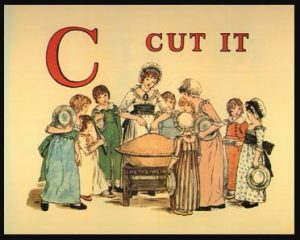 6. A teacher must choose which skills should be reinforced (rewarded)? OF COURSE!
6. A teacher must choose which skills should be reinforced (rewarded)? OF COURSE!
Reinforcement, by definition, predicts the recurrence of a behavior. Skills which should be reinforced are: identifying letter sounds which match the letters and/or groups of letters, blending those sounds into words, recognizing the meanings of words just read, reading a sentence as a whole and explaining what it said, etc.
7. The first and most crucial skill for successful reading is the ability to sound out words? YES! ABSOLUTELY!
This should start from day one and continue as the sounds of letters and/or letter combinations are learned. The simplest words to decode are words beginning with a consonant (non-vowel) sound, a short vowel, and an ending consonant sound. Each short vowel sound should be introduced separately. When new short vowel sounds are taught, the ones which are already learned should be reviewed. For example, the short a sound (as in cat) can be taught using word lists such as: cat, hat, map, sap, man, pan, etc. Once these lists are mastered, the short e sound (as in met) can be added in lists like: pet, met, pen, hen, hem, fed, red, etc. The next step would be to join these words together to improve the differentiation of vowel sounds. A sample list would be cat, pen, fed, hat, pan, pet, met, etc. Then add the short i (as in pig), the short o (as in hot), and the short u (as in mug). Once the five short vowels sounds are learned, practice lists should include them all together in a random order. Here is a sample list containing all the short vowel sounds: hat, mug, pen, hit, map, red, rod, bug, bit, bin, ham, cut, etc.
 Secondary advise for teaching short-vowel-sound words: I recommend having the child read the first two letters of the word first, then adding the third. For example: When reading the word red, read “re” and then “red”; for the word top read “to” then top. I have found this especially useful when a child who was previously trained to read words as whole units has trouble differentiating the vowel sound in the middle. For example, he may read hat as hot, or bun as ban, etc. Always reinforce the decoding (sounding-out) process. Every sound must be read correctly, in order from left-to-right as they are then blended and words are recognized.
Secondary advise for teaching short-vowel-sound words: I recommend having the child read the first two letters of the word first, then adding the third. For example: When reading the word red, read “re” and then “red”; for the word top read “to” then top. I have found this especially useful when a child who was previously trained to read words as whole units has trouble differentiating the vowel sound in the middle. For example, he may read hat as hot, or bun as ban, etc. Always reinforce the decoding (sounding-out) process. Every sound must be read correctly, in order from left-to-right as they are then blended and words are recognized.
8. It is helpful for the reader to review the sounds of letters or combinations of letters? OBVIOUSLY YES!
This can be done by using reading lists of words containing those combinations. For example, if a child has just been taught the sound made with the letters ou (ou as in couch), it is beneficial for him to read a list of words like: couch, slouch, mouth, sound, bound, found, around, etc.
I have found it beneficial to review sounds which haven’t been read much, with lists like these, at the beginning of a reading lesson. This alerts the mind and establishes the focus which is necessary for decoding. I liken this to the way a musician may begin a practice session with “warm-up” exercises like practicing scales and chords before beginning work on his repertoire of pieces.
9. When reading to the child, as early as he is able to sit still for even a very short time, move your finger across the words from left to right as you read them? YES! It doesn’t need to be constant, but, to the degree that the listener accepts it, is good. Building the child’s tolerance of this is also good.
The child will begin to train his eyes to move from left to right across the words as he watches your finger. I even suggest reading text without pictures. This will reinforce the concept that letters make sounds and sounds make words. If your child allows you, even briefly, to hold his finger and guide it across words, this will boost his skill to a higher level. When the child has learned to decode the simplest of words, you might stop your reading when you recognize a word which he is able to sound out and help him read the word. Then continue moving forward.
10. Picture books may have their benefits for teaching skills other than reading, but they should be supplemental rather than central to the reading program? THAT’S RIGHT!
I am not completely opposed to picture books, interspersed with word-only texts for reading aloud to your child. I recently found a picture only book which I used to model individualized story telling using the pictures as cues. I explained that since there were no words, I needed to look at the picture and use my own words. I find this to be a beneficial way to introduce creative story telling on the part of the child. This, however, should be seen as a separate skill, added as an alternative way to use books when teaching. Recently, after using this method with a student, she independently decided to make her own book by drawing pictures and she “read” it to me. I helped her add some words to the book which I knew she was able to read.
11. The parent/caregiver should stay involved and informed about his child’s progress? ABSOLUTELY!
Parents/caregivers should be kept informed about what is being taught and about progress as well as upcoming expectations. In my own experience, I am especially delighted when the parent or caregiver continues the teaching process when I am not there. Learning to read requires practice just like learning to play an instrument. For example, if a child is given a piano lesson once a week, he is expected to practice on his own during the days in-between. When a parent becomes involved with the child’s practice time at home, even on a minimal level, he will show faster progress. Involving parents is always a plus, when they are willing to try their hand at it.
By the same logic, it is important that a parent establish a report with teachers. This can be done by asking questions and knowing what is being taught. Sometimes this requires a little extra courage, but the parent who becomes part of the teaching effort is a true blessing to both student and teacher.
 by Meg Rayborn Dawson (homeschooling mom of 9)
by Meg Rayborn Dawson (homeschooling mom of 9)
MS, Exceptional Student Education (Univ. of W. Florida) emphasis on Applied Behavior Analysis
MA, psychology (Grand Canyon University)
Bachelor of Arts (Northwest Nazarene University)
**********************************************************************************
Did you know every year many 1,000’s of parents teach their own children to READ? Many of them have used Alpha-Phonics because they have found it can easily be used to teach their children to read. Your Kids can make a lot of headway in only a couple of weeks with this proven program. Alpha-Phonics is easy to teach, is always effective and requires no special training for the Parent. It works ! And it is very inexpensive. You CAN DO it !! Follow the links below to know all about the time-tested (37 + years) Alpha-Phonics program


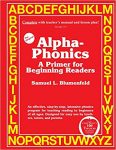
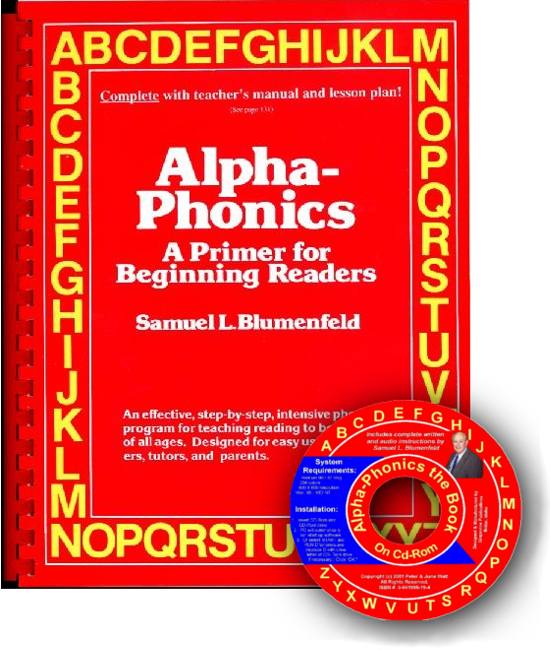 Alpha-Phonics
Alpha-Phonics The Alphabet Song!
The Alphabet Song! Water on the Floor
Water on the Floor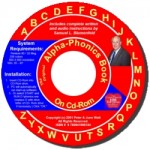 Alpha-Phonics the Book on CD Rom
Alpha-Phonics the Book on CD Rom Blumenfeld Oral Reading Assessment Test
Blumenfeld Oral Reading Assessment Test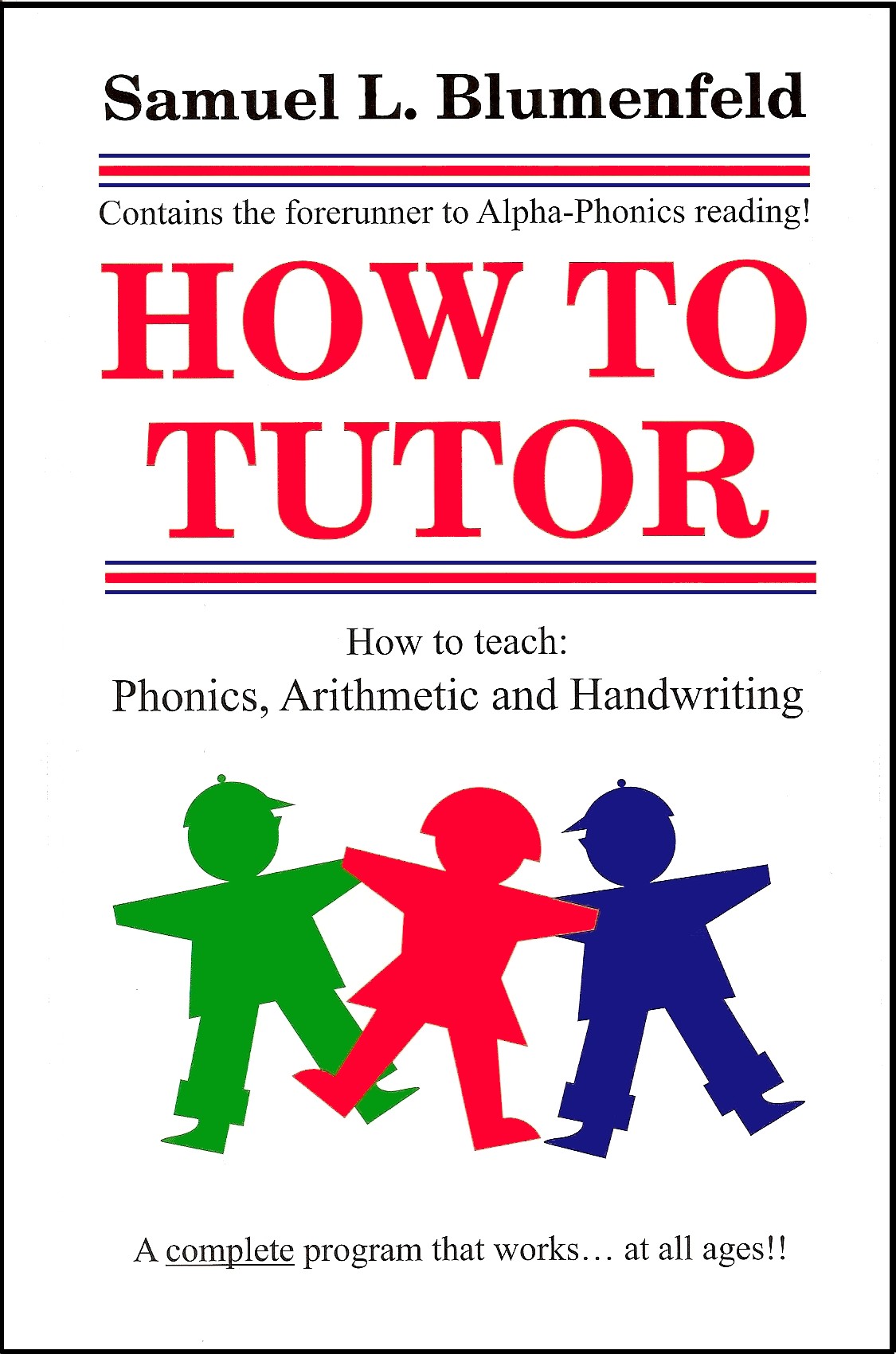 How To Tutor
How To Tutor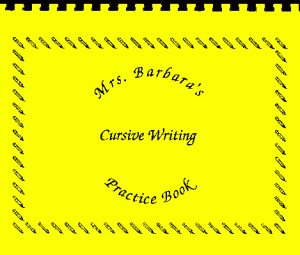 How To Tutor Cursive Handwriting Workbook
How To Tutor Cursive Handwriting Workbook